
Cartoon critics Phil Witte and Rex Hesner look behind the gags to debate what makes a cartoon tick. This week our intrepid critics take a look at Twitter.
The news is dominated by Elon Musk’s bid to acquire Twitter, so it’s time to re-examine this peculiar social media institution. The idea that millions of followers would simultaneously receive short bursts of text from people of interest seems preposterous.
And what were those first tweets about anyway? The origins of the galaxy? The mysteries of the universe? No, Kaamran Hafeez, with Al Batt, has a far more prosaic answer.
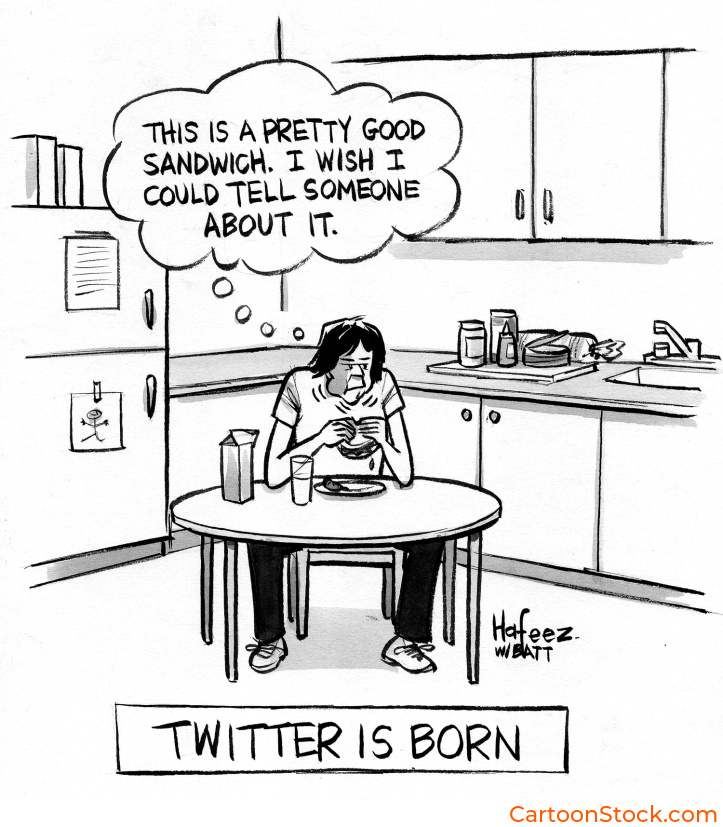
Early practitioners of Twitter didn’t concern themselves with strategic content; anything would do. Stream-of-consciousness, off-the-cuff, and random thoughts were snapped up by a hungry audience. Perennial New Yorker cartoonist Roz Chast invented a persona for one of those early Twitter stars. The observer across the street—perhaps the cartoonist herself—seems nonplussed yet intrigued.
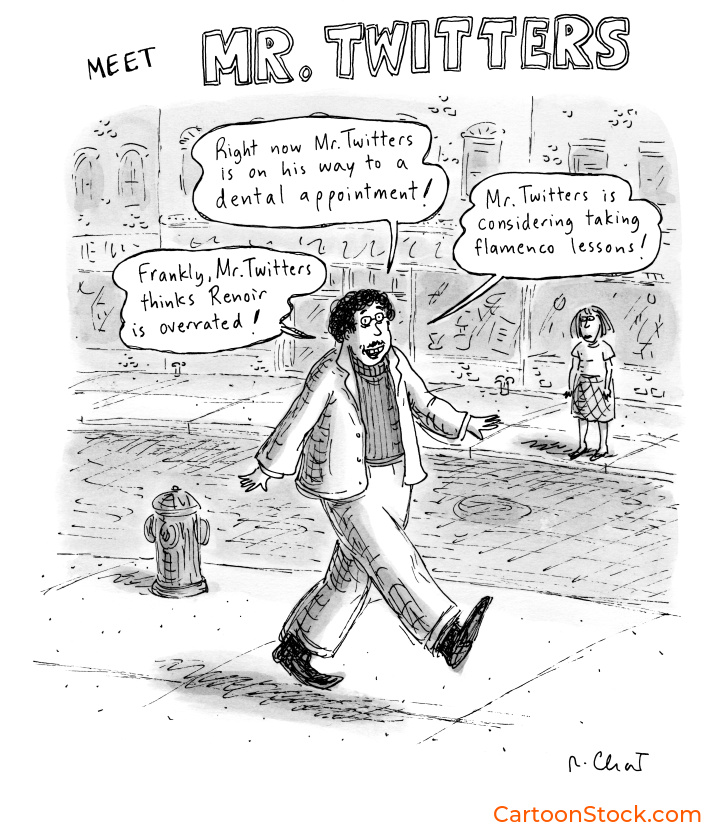
As the Twitter platform matured and went mainstream, any and all human activities become fodder for its voracious appetite. In a lovely full-color cartoon from Tom Toro, the harried mom defines the limits of online sharing. Note the vivid details in the child’s room, from the playpen toys to the clothes and bottle on the dresser.
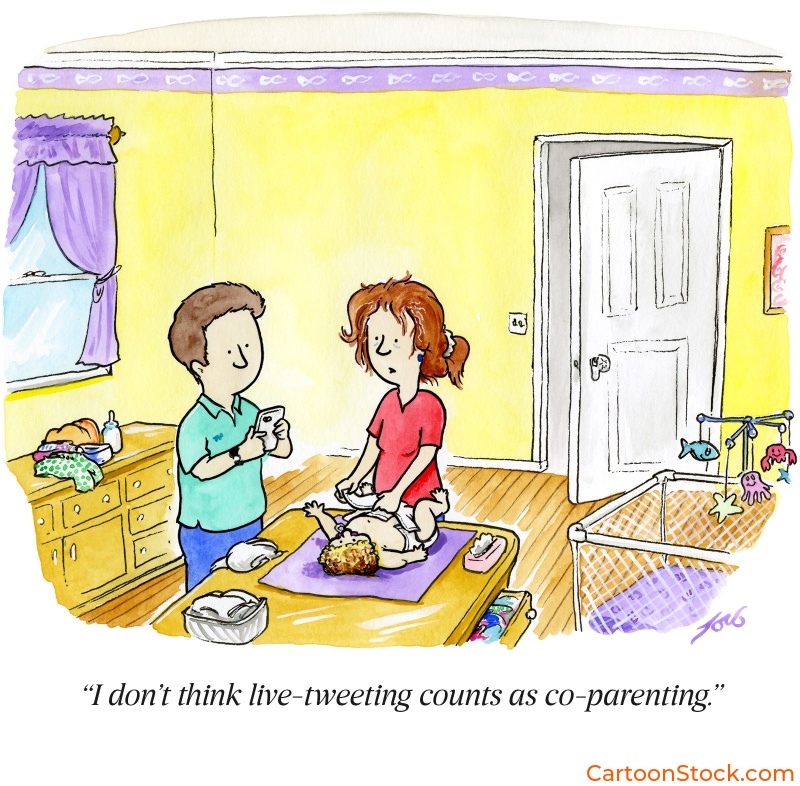
Early Twitter adopters, often youthful, tended to throw caution to the wind. Some tweets, written in haste and passion, could have used a cooling-off period for sober reflection. The young woman in Jon Adams’ cartoon has crossed a “red line” of sorts and must skedaddle. Poor old Dad looks a bit perplexed holding his old-fashioned TV remote.
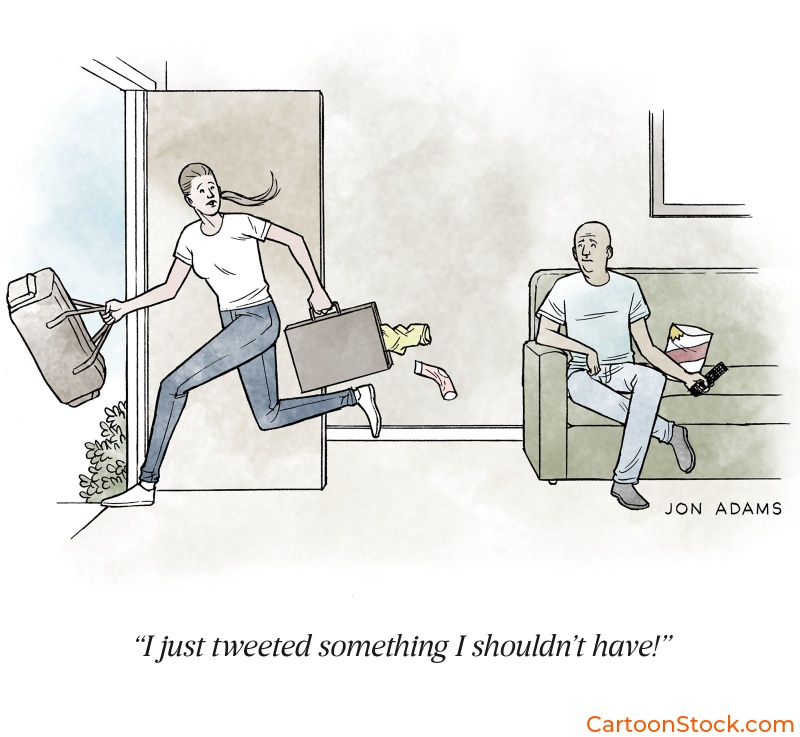
The Miranda warning is a staple of television crime dramas. Cartoonist Joe Dator, a dyed-in-the-wool New Yorker, uses his ear for the street to mash up a fine caption. You can always tell the crooks in a cartoon—they’re the ones wearing a grungy watch cap.
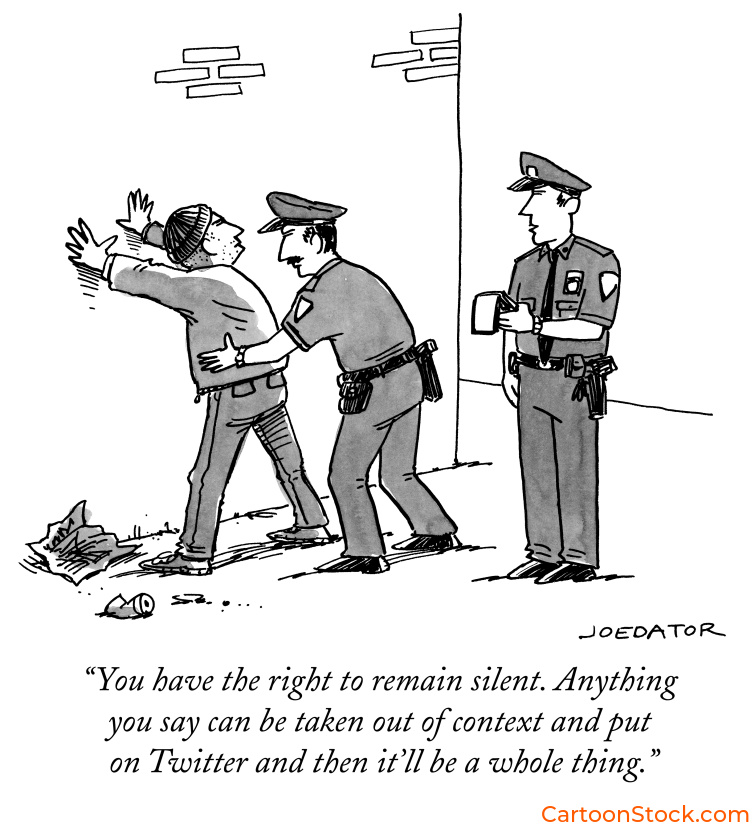
Numbers are meaningful to Twitter aficionados, especially the number of people signed up to read your every online utterance. Elisabeth McNair has found the perfect rodent to symbolize this followship phenomena.
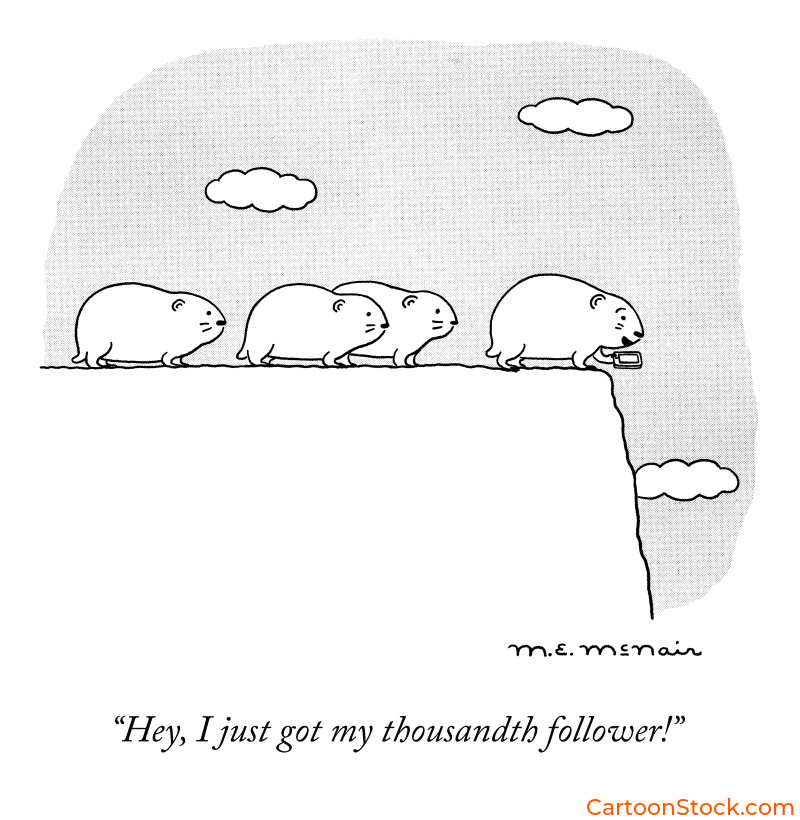
What could be more awkward than the first meeting between Dad and the boyfriend? Normally Dad—looking affluent with his patterned socks, grand piano, and matching furniture—would intimidate the scruffy boyfriend. Not in Julia Suits scenario–this young man’s got cred with Dad. Followers, not cash, is the coin of the realm.
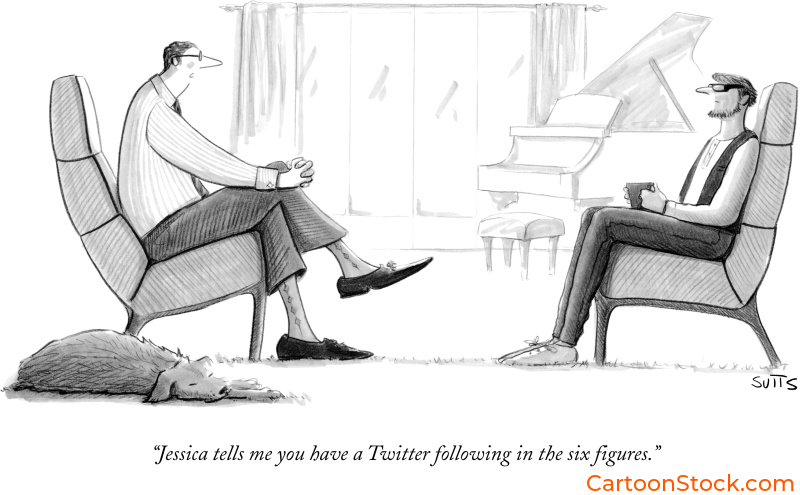
Boomers are largely befuddled by Twitter; yet, it’s hard to deny its power and influence after our previous president. Kaamran Hafeez evokes the classic “camper’s scary story” image to put across his Twitter gag. And what camper’s story would be complete without creepy facial underlighting from a flashlight?
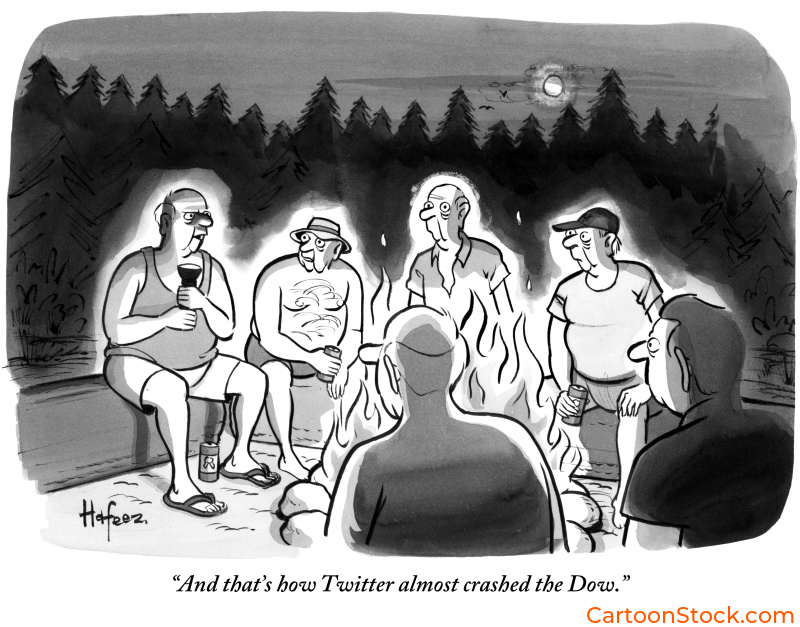
Who says cartoonists can’t ask deep philosophical questions? Bruce Kaplan’s character poses an intellectual stunner to his cocktail party listener. Kaplan’s brilliant use of asymmetrical negative space makes us feel as if we’re eavesdropping on these two gentlemen.
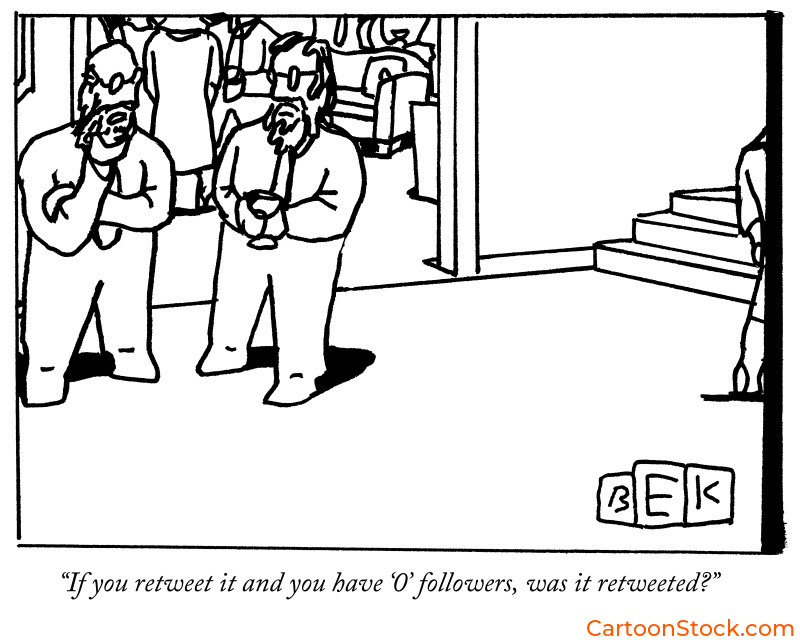
We’re back to our “Twitter whisperer,” Julia Suits, to find the potential for worldwide virtue in the Twitter platform. Beyond the harassment, intimidation, and verbal bullying, the Twittersphere has the global reach to instantly touch us all. Or, perhaps in this case, our cartoonist’s tongue was firmly in cheek. You be the judge.
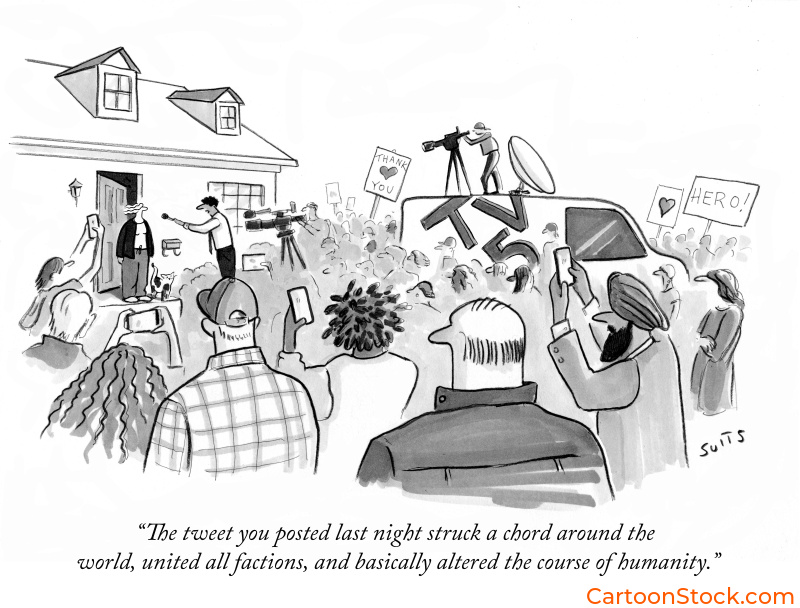
Life’s end brings on the ultimate cosmic reckoning: estate, beneficiaries, accomplishments. It’s the grand summation, as Matthew Diffee observes in our final cartoon. And what to do with the decedent’s Twitter followers? A modern conundrum. Keen observers will note Diffee favors a pencil over the traditional pen and ink—an intriguing artistic preference.


